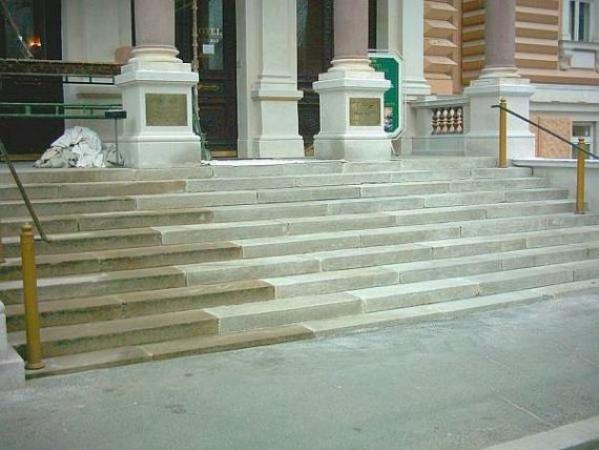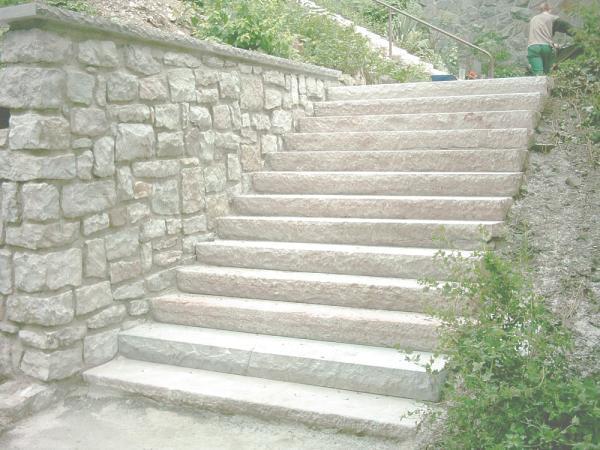Renovation of stone is not just cleaning

Apart from cleaning, sometimes you must also repair a chipped corner, edge, or fill a hole or a crack. A special cement can also be used for these cases. It is mixed to look like a particular stone. Also, a stainless reinforcement is put in the damaged place which will protect it from being damaged again in the future. After you insert the reinforcement, it all must be pointed. Actually, the most expansive part of this renovation could be the search for the original material to replace bigger damaged areas. Or at least, finding a similar material.

Surface treatment of renovated stone
Several kinds of impregnation are used. The used chemicals always protect the surface of stone against outside elements. They lower the possibility of soiling, but also the effects of water. Without the final impregnation (hydrophobization, oleophobization), the whole process of renovation of stone would be useless. The opened pores of stone would get quickly soiled by dirt again. Well done impregnation could be imagined as a plastic film that wraps around the stone. The stone is protected in this way and it also postpones the need for future renovation. Impregnation is actually is only one-way permeable (from the inside out).

Anti-slipping strips and grooves
The surface of stone is usually at least partially anti-slipping, but not entirely. Especially when stone is wet, it gets slippery, not mentioning frost. That is why anti-slipping protection is used as the last step of renovation of stone staircases and paving – in particular fixed anti-slipping strips, which unfortunately do not last long (they start peeling off soon), or long-lasting grooving that is blasted in the stone. The grooves disturb the upper layer of stone. You can also use synthetic resin with calibrated sand, which is applied to the stone in places with high danger of slipping (corridors, bathrooms, lavatories, showers, swimming pool areas, saunas, but also on staircases, and at the entrances of buildings where the paving can be slippery).


Source: www.ceskestavby.cz
